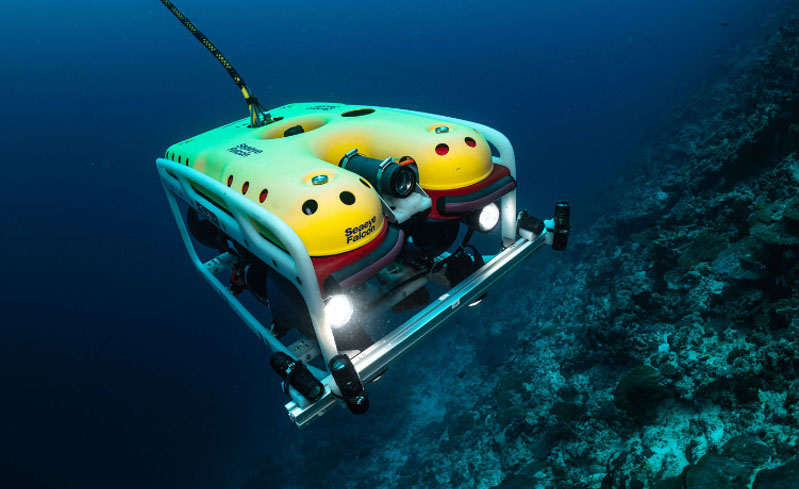Remotely Operated Vehicles (ROVs) are advanced underwater robotic systems controlled by operators onshore or by divers in the water. These vehicles are designed to explore deep-sea environments, capturing high-quality images and videos for various applications. ROVs vary in size, from as small as a basketball to as large as a full-sized SUV, and their cost ranges from a few thousand to several million dollars.
These underwater robots are widely used across industries such as search and rescue, military operations, exploration, aquaculture, marine biology research, oil and gas, ocean energy, shipping, and subsea infrastructure inspection. Equipped with sophisticated optical components, ROVs facilitate port and ship monitoring, pipeline inspection, and underwater target identification, pushing the boundaries of marine exploration.

Work-Class ROVs
Work-class ROVs are built for deep-sea exploration and subsea inspections, reaching depths that divers cannot access. These ROVs serve as a safe alternative to human divers, commonly deployed in offshore energy projects and deep-sea archaeological research. They typically operate at depths ranging from 3,000 meters (9,800 feet) to 6,000 meters (19,700 feet).
Light Work-Class ROVs
Light work-class ROVs are designed for moderate to deep-sea exploration. These vehicles are often deployed from ships and replace divers for inspections and maintenance. They can be equipped with various add-ons, such as laser scanners and specialized detection sensors, making them invaluable for underwater dome lens engineering. Their typical depth rating falls between 1,000 meters (3,280 feet) and 3,000 meters (9,800 feet).
Observation-Class ROVs
Smaller in size, observation-class ROVs are ideal for exploring lakes, rivers, and coastal waters. They are frequently used for pre-dive safety inspections before divers enter the water. These ROVs can be fitted with sonar systems and custom sensors for versatile applications. Their depth range generally varies from 300 meters (984 feet) to 1,000 meters (3,280 feet), depending on the model.
Mini or Micro ROVs
The smallest category, mini or micro ROVs, are primarily used for inspecting shallow water environments, including hard-to-reach areas such as pipeline systems and underwater infrastructure. Their depth rating typically ranges from 100 meters (328 feet) to 300 meters (984 feet).
The U.S. Navy first tested ROV technology in the 1960s for retrieving submerged data devices. A major breakthrough occurred in 1966 when the Navy’s Cable-Controlled Underwater Recovery Vehicle (CURV) successfully recovered a lost nuclear bomb off the coast of Spain. In 1973, the deep-diving submersible "Pisces" sank near the Irish coast, and its crew was successfully rescued using an ROV. Throughout the following decades, ROVs became essential across multiple industries. Work-class ROVs were the first to be widely adopted, and they remain crucial today. Observation-class ROVs have since emerged as an innovative solution for shallow-water monitoring and inspection, addressing specific operational needs.
As ROV technology advances, so does the need for superior optical systems to enhance visibility and data collection in extreme underwater conditions. Bena Optics provides ultra-high-precision optical components crucial for ROV dome applications, including lenses, windows, and imaging systems designed to withstand high pressure and low-light environments. These optical solutions enable ROVs to capture detailed images, navigate complex underwater terrains, and conduct accurate inspections, making them indispensable for modern underwater exploration and industrial operations.